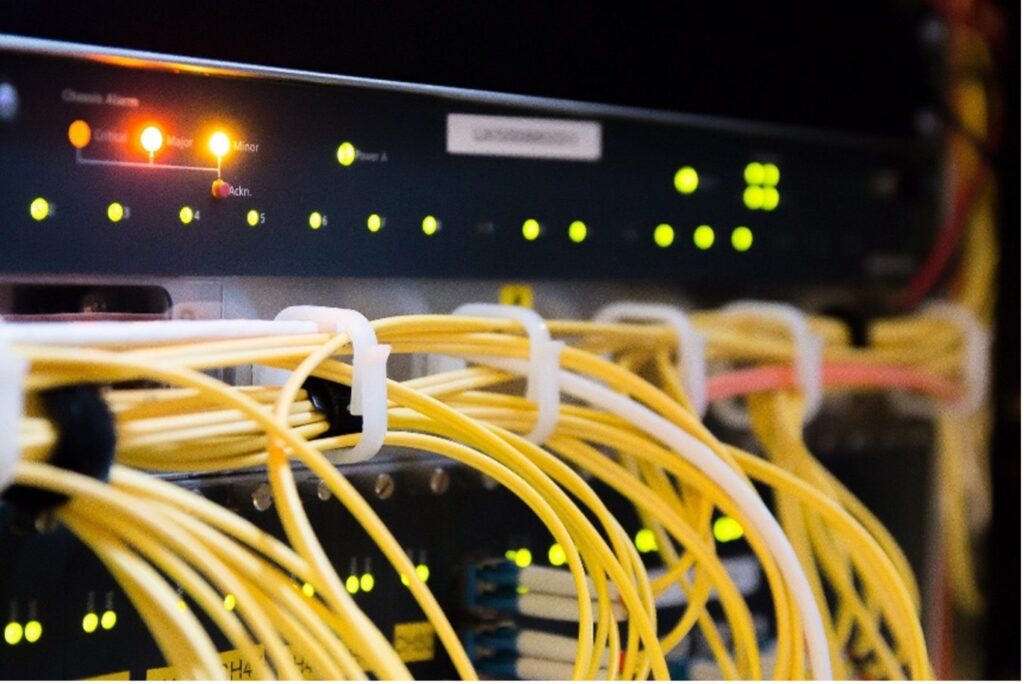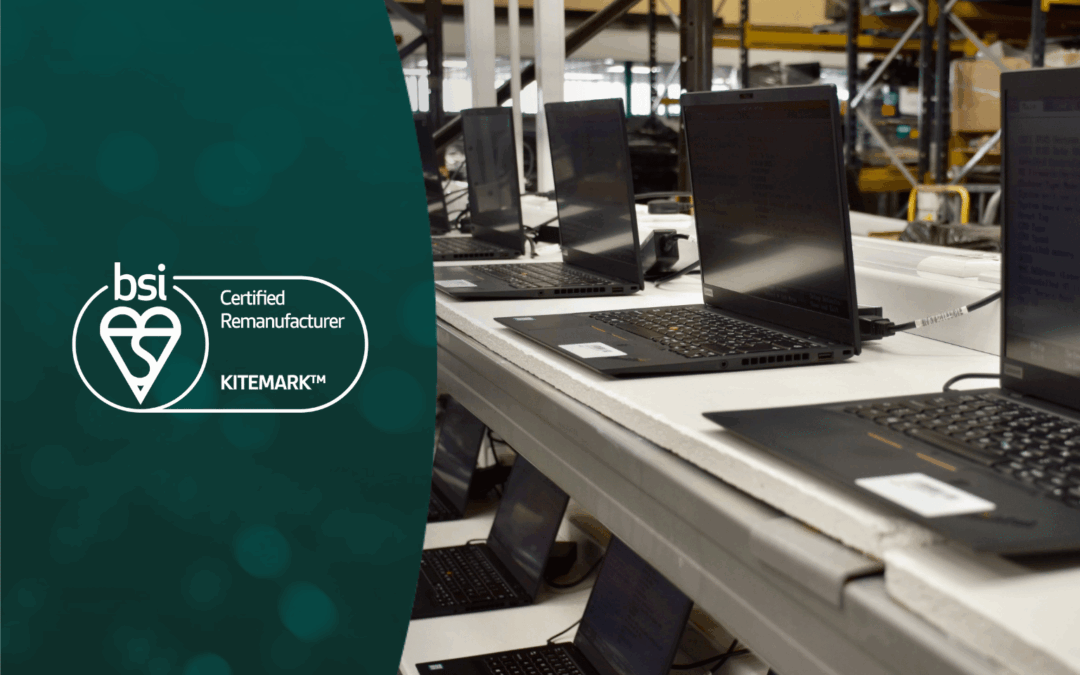Whether an organisation has its own internal servers, rents server racks within a data centre or stores company data through its cloud provider, these steel boxes contain some of the earth’s most precious metals, elements and minerals – along with several data-bearing hard drives.
Global internet traffic grew 15-fold between 2010 and 2020.
In response, data centre storage capacity multiplied 25 times to meet demand.
Financial Times.
This data trend will only continue. In fact, global technology consultancy, Gartner, predicts that a further 700 data centres will need to be built around the world in the next three years to keep pace.
As they run constantly, every 3 to 5 years servers need to be upgraded to remain secure and efficient. Therefore, the vast majority of the 11 million servers, which were produced globally in 2017 will have already been decommissioned. +
In addition, our accelerated digitalisation and our new hybrid working structures have seen many companies transition to the cloud and consolidate their data storage to improve speed, efficiency and cost. Offices may relocate to downsize or close floors of their current building. As the way our business operations change, there simply may not be the need for the in-house server equipment so this is decommissioned in full or in part.
Constructing a technologically advanced, high-performance data centre is a colossal undertaking, therefore, as you might imagine, the same is true once these become end-of-life IT assets; they require highly secure de-installation. So, exactly how do you decommission a server?
Whilst it is possible to undertake this internally, few business enterprises have an employee who is as experienced in this task as they would need to be to protect company data during the procedure. It is a highly, complex and involved task so to ensure legal data protection compliance, most organisations seek professional data destruction services, such as highly accredited IT asset disposal companies.

How do you decommission a data centre?
Whether you choose to undertake your decommissioning project management internally or prefer to work with a big data ITAD partner, there’s much to consider and even more to keep track of. What are the steps in the decommissioning process to ensure that you not only remain on track but on time and on budget – and crucially, how do you ensure that you don’t run into any data governance challenges in the future?
Scoping.
A two-stage planning process will help to ensure a faultless workflow. Create an initial scoping document as a basic outline to help you establish your goals and expected outcomes. Subsequently, this should be followed by a comprehensive, detailed plan.
Team and resources.
Who will be involved with the equipment’s withdrawal? Who is responsible for each stage of the process? Which stakeholders need full sight of the process?
An undertaking of this importance will require a senior project manager to oversee the entire task. Leading IT asset disposition services will ensure the assignment is managed by a dedicated PRINCE2-accredited decommissioning expert. An ITAD partner will also have stand-by teams to draft in additional resources if required; from qualified de-racking technicians to porterage staff. As you can never be too careful with your data, key questions to ask your ITAD supplier should include whether they directly employ all staff, has everyone involved been DBS checked and screened to the BS7858 standard?
You should prepare a list of equipment. It is easy to miss important items like lifting devices or secure packing materials for the removed components and racks. Do ITAD services provide all you need? If any data-bearing assets are to be transported for data destruction, are they to be moved to secure facilities in lockable flight cases in GPS-tracked vehicles?
Budget.
As part of the initial planning stage, you should set a budget to ensure that costs do not spiral. Record everything that this needed; include staff, hired equipment and any fixed fee for on-site data erasure or off-site data destruction services. However, often businesses emit two important budgetary factors; 1/ accounting for any business downtime and 2/ the residual value gained through asset recovery. ITAD services can ensure that you get the very best resale value for recommerce or recycled assets as they know the market inside out.
Timing.
When it comes to timing, any downtime means lost productivity and a loss of revenue. Whilst it will depend upon your hours of business operation, it’s important to schedule the task at a time when it will create minimum disruption. You’ll also need to consider when you need to notify either customers or employees of service downtime. Some secure IT asset disposal companies now offer a 24/7, out-of-hours on-site service so you can maintain business continuity.
Setting key milestones throughout will help you assess progress. At these points, build in time to pause and re-evaluate the progress. Verification of the process by a second pair of eyes will help you check that all has been actioned as it should be.
We’d also recommend setting a timescale bracket; the ideal scenario and the absolute latest date by which the decommissioning must be completed. It’s always good to have a buffer for unexpected circumstances with complex projects to prevent any negative impact.

Detailed implementation planning.
Take a complete inventory of all assets involved so you know exactly what equipment is in place and what data is held where? In larger organisations, it is surprisingly easy for asset inventories to quickly become outdated.
Once identified, create an exhaustive list of every individual item of both hardware and software to be decommissioned and their precise location. Whilst this may appear arduous, it is absolutely essential for a seamless project – take account of cabling, power supplies, software licences, cabinets, heating, ventilation and air-con equipment.
What applications and licences must be retained for the functionality of other systems? Which contracts can be cancelled? For medium to large projects, mapping data centre resource dependencies will mean that your decommissioning process can be completed in structured stages. This systematic approach will reduce the risk of failure or worse still, a data breach.
Mapping and physical asset/data audits will help you identify any snags in the process before they occur and also, your redundant IT equipment which is no longer required.
Crucially, remember before any of the de-installation processes begin – be sure to take a secure backup of all business-critical records and files.
Asset tracking and compliant documentation.
Every item audited should be meticulously asset tagged and also labelled correctly for the next part of the disposition process. Assets should be identifiable by description, asset ID, and serial number for multi-factor authentication throughout.
If different assets are to be recycled to prevent e-waste and others are to be sanitised and remarketed, this should be noted in the audit. Rather than shredding a perfectly serviceable asset, NCSC-approved data wiping services using the advanced Blancco system means that that asset can be reused, redeployed or remarketed. Could it still retain a financial value for your company? If you were to sell redundant IT assets, you will regain this value but would also contribute to the circular economy and boost your organisation’s sustainable credentials.
Detailed documentation of all equipment decommissioned should be created and retained as a full audit trail for data controllers. It is important to ensure every asset has a full ITAD chain of custody and an IT asset disposal accreditation certificate. A comprehensive paper trail will be invaluable should you ever need this for an ICO audit.

Our business data is hugely valuable and we are well aware of the legal and financial implications should we fail to protect it.
Whether you undertake your data centre’s retirement in-house or outsource ITAD to a professional service, you must ensure your decommissioning team have effective planning expertise, a high degree of technical competency and supplies the detailed documentation and accreditations you will require to remain fully compliant.
With much at stake, including our enterprise’s reputation, it is vital to plan efficiently, and then plan some more to ensure a smooth, stress-free decommissioning project.
*Finance Online, ^Tech Target, +Financial Times.
At tier1 Group, we understand that not only is your data centre decommissioning project a substantial and vital project, but it is also extremely important to limit any downtime for both your team and your customers.
Our trusted, reliable decommissioning project managers and highly qualified technicians work flexibly, tailoring your project and our environmentally friendly ITAD to the needs of your business.
To find out more about our out-of-hours on-site data erasure, server or data centre decommissioning services, contact us on 0161 777 1000 (Manchester), 01621 484380 (Maldon) or visit www.tier1.com
Resources.
Tech Target, Exit Technologies, Financial Times, Transpere, Horizon Technology, Seam Services, Eco IT Solutions, Finances Online.



